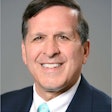
When dentists are looking to open a new practice, one of the first questions they often ask is, "Where is the best location?"
Locating your practice where it is most convenient for you or where the lifestyle is most appealing to you could be a financial mistake. A more appropriate consideration is where the patients you want to serve are located.
Consulting a demographics professional is one way to help answer the question of where to establish your practice. Understanding the data behind the demographic reports they provide will enable you to make the best location choice.
The dentist:population ratio
One of the first things you will get from a demographics specialist is a dentist:population ratio for the area you are considering. What do these numbers really mean? Dentists are often told that a ratio above 1:1,500 is good and that, if you're pulling these kinds of numbers, your practice should be successful.
On the surface this analysis makes sense. But consider the following:
How was the ratio calculated? Did your researcher calculate the ratio based only on ZIP code, or was a wider radius around the potential practice location used? Studies have found that patients are willing to drive (from home or work) up to 10 miles to their dentist, so it makes more sense to pull a dentist:population ratio from a radius around a location rather than from just one or two ZIP codes.
Determining a relevant ratio for a location depends on other factors, too, such as whom you're targeting, whether you're in an urban or suburban area, and surrounding geographic barriers like highways and bodies of water. In urban areas, radii typically range from 1-4 miles. In suburban or slightly rural areas, radii range from 3-10 miles.
The ratio defined: Awareness of competing dentists and the demographics of your market is key to calculating a truly meaningful dentist:population ratio. For instance:
"Dentist" is generally thought of as an entire dentist population in a given area. However, it should be defined as "competing dentists," because not all dentists should be included. For example, prosthodontists should not be in the dentist:population ratio for a pediatric dentist. If you're a specialist, having more general dentists in your area to refer to you may even be an advantage.
The word "population" is normally thought of as all people in a given area. It should be defined here, though, as your "target market." Not all people in an area will fit the desired patient parameters you've outlined for your practice.
For example, a pediatric dentist needs to target households with children. Let's say that in a 4-mile radius around a potential location there are 10,000 people and only four other dentists. One way of calculating dentist:population ratio gives you a rough number of 1:2,000, which appears to be a good ratio.
If, however, 7,000 of those 10,000 people are young professionals and baby boomers without children at home, this brings the viable target market population down to 3,000. The rough ratio is then 1:600, right? Not necessarily, because -- depending on whether the other four dentists in the area accept children as patients -- your ratio could be further affected, positively or negatively. Weighing in all these factors is essential for calculating a conclusive ratio.
Determine your ideal patient
Before you decide on a location, decide what type of practice and what kind of patients you want. Create your business model and design your office with these always in mind. Think, "What benefits am I selling and to whom am I selling them?" Aim to communicate those benefits in a way that will set you apart from your competition. Consider the following:
Look for an underserved niche in the area you're considering for your practice. Niche doesn't necessarily mean specialty, as possible niches range from insurance friendliness and convenient hours, to leading-edge technology and exceptional patient amenities (such as massaging dental chairs). An underserved niche could even be a "do-it-all" office. Evaluate your competition, determine where they are lacking, and then work to fill that need.
Know that women make 75% of healthcare decisions. When locating your practice, consider where there is (or will be, in a developing area) a high volume of female traffic -- in or near a shopping center, by a grocery store or salon, or near a big school.
Target potential patients who will be loyal. Targeting everyone who needs a dentist is not effective or profitable, as many people wouldn't be ideal patients for you. Think about characteristics of a loyal consumer patient.
Seek to meet the needs of your target market. Many dentists ask if they should locate downtown or in a suburban area. Keep your target market and niche in mind, and locate where it is most convenient for your average target patient. If you're reaching for young professionals, choose a hip urban office and have hours convenient to their work schedules. If you'll see children, locate near a school and offer amenities that appeal to moms and kids.
Go where there's growth
Compare past and future growth patterns of potential locations. Hone in on an area with strong projected growth to increase your opportunities for new patients in the future. Look for developing areas with road expansion, new neighborhoods, more schools opening, etc.
When preparing to open a dental practice, it is important to understand the information your demographic specialist gives you, and to know which questions to ask. Keep in mind both your personal goals as a dentist and the goals for your practice as a whole, then apply those to choosing a great location and targeting your ideal patient.
Also, this process should not end with your location decision. An optimal location is even better when everyone knows about you, so marketing is a vital investment. Smart marketing lets potential patients know who you are, where you are, and what you have to offer them that your competition doesn't.
Jennifer Smith is a marketing associate/demographics specialist for Practice Cafe, a practice marketing firm located in Austin, TX.



















